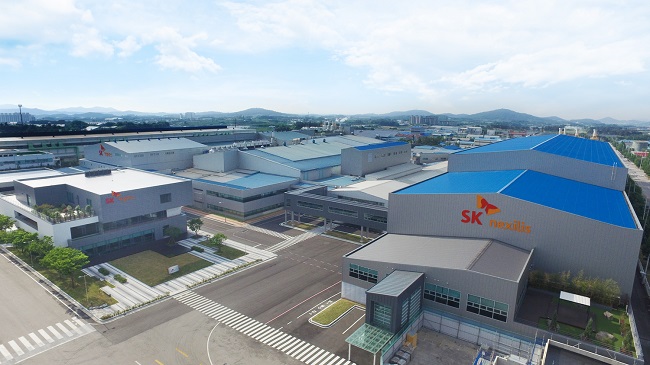
This photo, provided by SKC Co. on June 1, 2020, shows SK Nexilis’ plant complex in the southwestern city of Jeongeup, where a sixth plant will be built.
SEOUL, Oct. 27 (Korea Bizwire) — SK Nexilis, a specialist in the production of copper foil, a core component for the batteries of electric vehicles (EVs), announced that it is on track to expand factory output as well as to establish new production lines overseas.
This move came after the demand for copper foil increased along with the increase in EV battery demand.
The company decided to expand its fifth plant located in Jeongeup, North Jeolla Province back in March, followed by another decision to expand its sixth plant in Jeongeup in June.
For the expansion of the two plants, it invested 120 billion won (US$106 million), respectively.
SK Nexilis aims to complete the expansion of the fifth plant by the second half of next year and the sixth plant by the first quarter of 2022.
If the expansion of the sixth plant is completed, its annual copper foil production capacity is expected to increase to 52,000 tons.
“We are going for factory expansion to secure our place in the copper foil market, which is growing fast on the back of the robust growth of the EV market,” said Kim Young-tae, CEO of SK Nexilis.
“To further expand production capacity, we are now reviewing the idea of establishing new plants overseas. To this end, we’re looking into the feasibility of developing facilities in Southeast Asia, Europe and the U.S.”
The company plans to make decision on which region to opt for by the end of this year. Through establishment of a new plant overseas, SK Nexilis aims to triple or quadruple annual production capacity by 2025.
“SK Nexilis has world-class copper foil technology that is assessed to be about five to eight years ahead of the industrial average,” Kim added.
Kevin Lee (kevinlee@koreabizwire.com)






